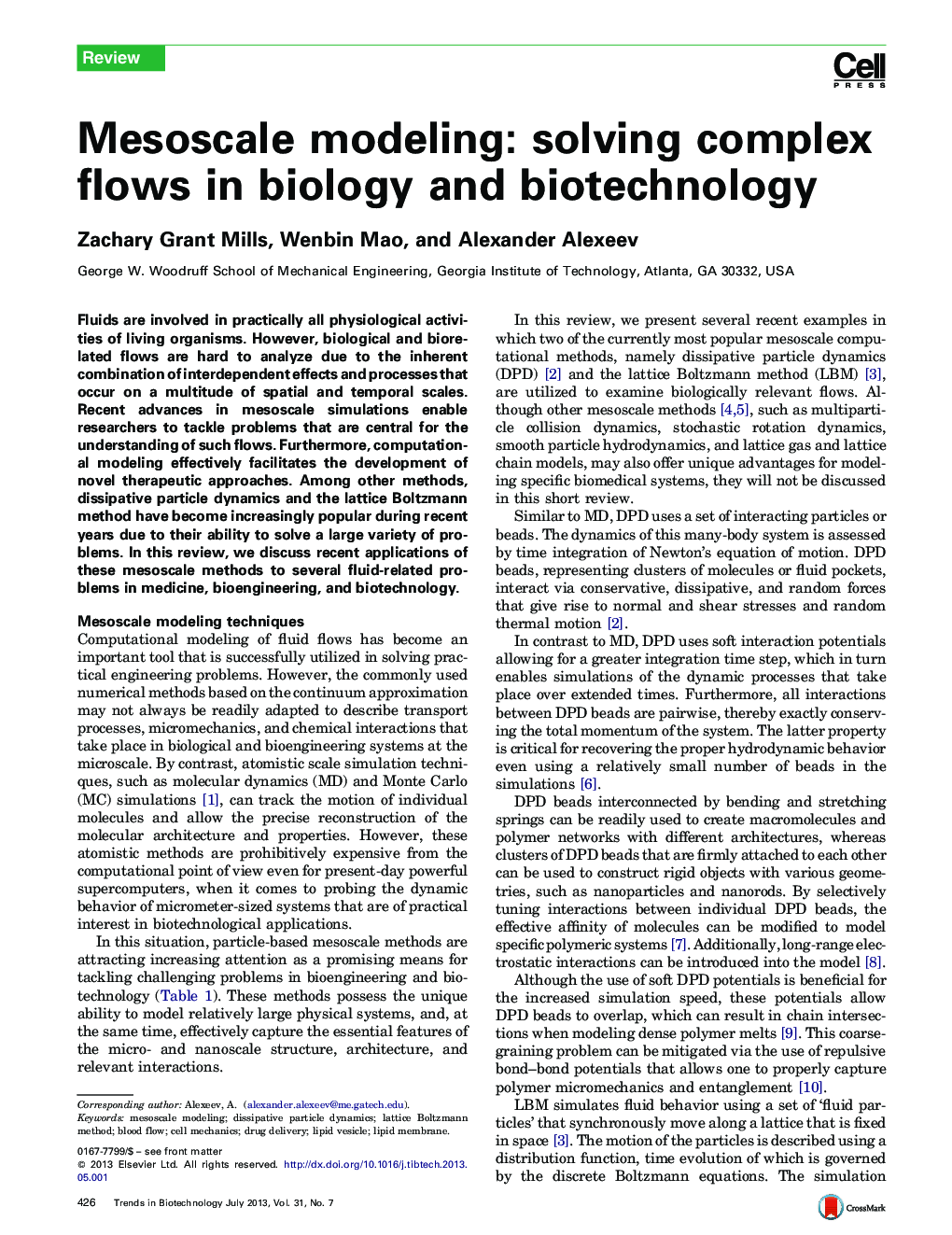| Article ID | Journal | Published Year | Pages | File Type |
|---|---|---|---|---|
| 36945 | Trends in Biotechnology | 2013 | 9 Pages |
•Mesocale methods are being used to investigate techniques for microfluidic sorting and enrichment of biological cells and other particles.•Dissipative particle dynamics (DPD) is used to gain a better understanding of the effects that diseases have on the structure and mechanics of red blood cells.•Researchers are utilizing mesoscale methods to develop novel techniques for controlled drug delivery.•DPD simulations of lipid membranes give insight to function and how specific particles are able to pass through them.
Fluids are involved in practically all physiological activities of living organisms. However, biological and biorelated flows are hard to analyze due to the inherent combination of interdependent effects and processes that occur on a multitude of spatial and temporal scales. Recent advances in mesoscale simulations enable researchers to tackle problems that are central for the understanding of such flows. Furthermore, computational modeling effectively facilitates the development of novel therapeutic approaches. Among other methods, dissipative particle dynamics and the lattice Boltzmann method have become increasingly popular during recent years due to their ability to solve a large variety of problems. In this review, we discuss recent applications of these mesoscale methods to several fluid-related problems in medicine, bioengineering, and biotechnology.
